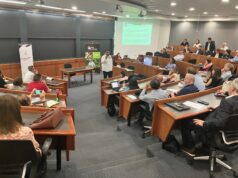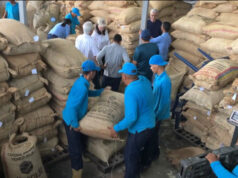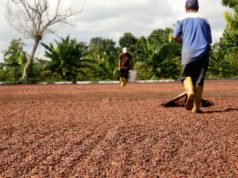By Yuly Carreño
As a precious treasure waiting to be discovered, the current scene of the cocoa in Paria reflects that peculiar Venezuelan idiosyncrasy in which work and effort are combined with disinterest and indolence.
Those who know this area are aware that cocoa production has been characterised by a great diversity of facts: the once reputation of the cocoa from Rio Caribe in international markets, the abandonment of numerous haciendas after the oil boom, some sectors affected by the increasing drug trade and also by government’s policies based more on the popular saying of “feast today, famine tomorrow”, than on real strategies to increase productivity in the long term.
As it has been happening at national level, we could speak of an apparent re-boosting in cocoa production in the Parian region, demonstrated in the indicators which place it as the greater production zone in the country.
This seat of honour should be a source of pride and joy for the locals. However, this is far from reality. For instance, we wonder why the largest producer state of cocoa in the country reflects such negligence and inattention in their plantations. Why are there so many deficiencies in handling the item? Getting answers is as difficult as it is changing this situation. From Vivaelcacao we try to answer these and other questions.

A plot heritage
Perhaps some historical and cultural factors affect this situation a great deal. Ezequiel Millán, who coordinates the plant propagation programme for Fundación Proyecto Paria, and was also a member of the commission that developed the nation’s seventh plan on cocoa for Sucre state, has gone through this experience for 47 years.
When making a hindsight evaluation of the cocoa cultivation in this area, it stands out the colonial era of large producers or “Grandes cacaos”: “Here, they did not leave any strategy for improving the grain, thus, in the absence of such an inheritance the small producer only got used to harvesting, semi-fermenting and drying”.
It is inevitable to compare this region with Barlovento, formerly the largest producer in the country. “When we analyse the historical facts, we find out that here in the eastern region the cocoa process only consisted in harvesting the fruit, while in Barlovento it is different, since the big producers have left a tradition to their generations. For that reason most of the cocoa farms possess all fermentation and drying equipment. They also have the infrastructure for the transformation of the grain from its internal quality “.
Likewise, there were some local beliefs about cocoa which were leaving marks and whose results are evident at present. For instance, it had been thought that it was harmful to health and it even produced tetanus.
“The producer was left behind and there was some kind of conformity, with no vision of improvement to generate more income. When we lack of that cultural factor or it does not endure, it is extremely difficult to recover it. “
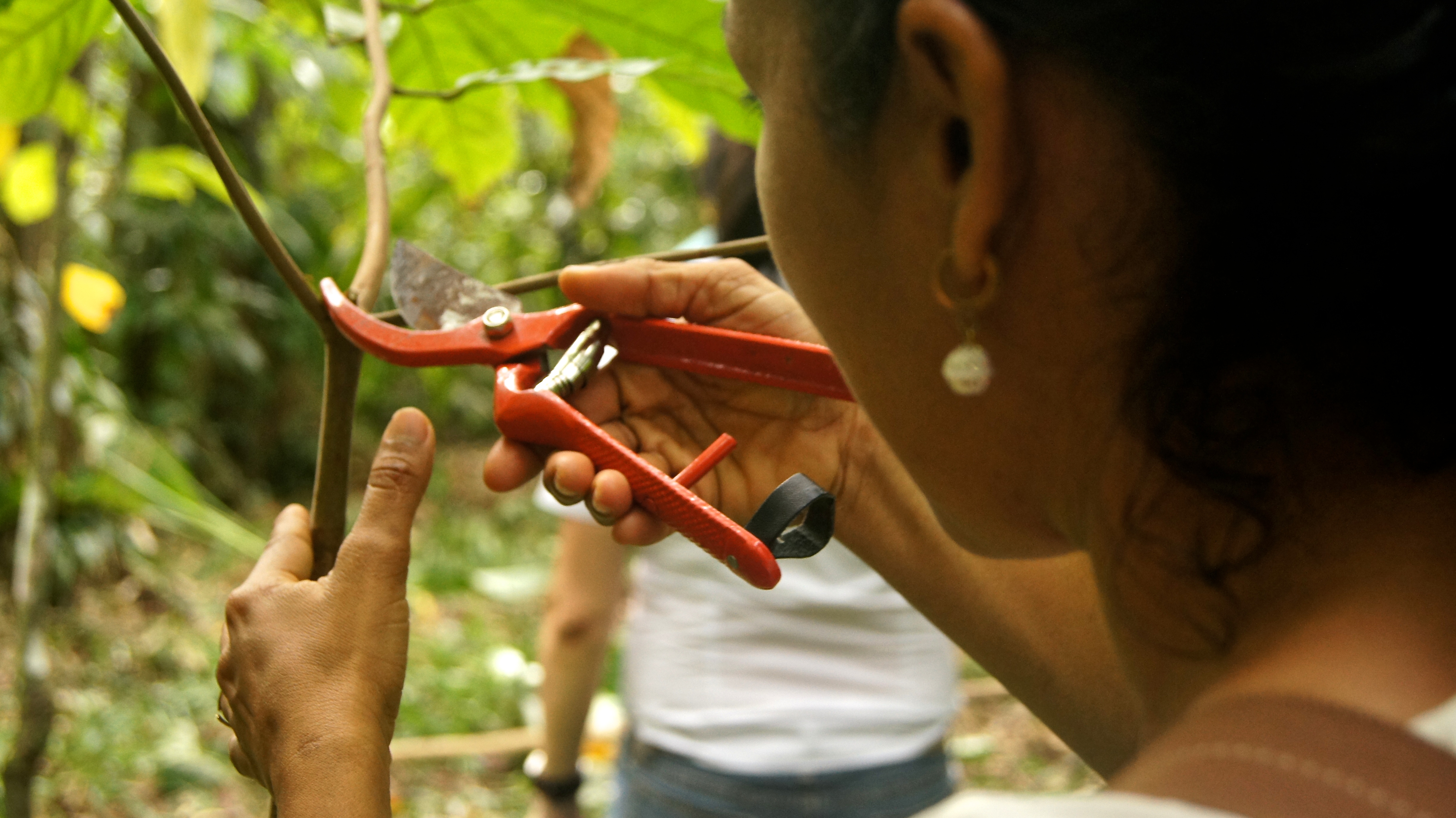
Relay generation
Passing of time has not contributed to change this situation. On the contrary, it has progressed together with the age of producers, who are mostly men over 50 or 60 years old. The way they manage their plantations is very basic and experimental, as they learned from their parents or grandparents.
“Cocoa is a difficult item to work on. It’s not like any other vegetable, for example,” Ezequiel Millan says, while pointing out the absence of a relay generation to be able to start a new period in the cocoa production in Paria..
“Without that relay generation it is an uphill climb. It would be most satisfactory that the producer, by his own means, resolves that he wants to continue improving cocoa. We can continue to put more effort, resources and knowledge but, in spite of those facts, it seems that we do not make any progress” he complains.
At least 95% of cocoa cultivation in in Paria is in done by small producers with properties from 3 to 5 hectares, whose yield does not exceed 300 kilos, being mainly sold as dry cocoa.

Poor practices
This low productivity is due to an improper handling of plantations, among other factors. This is well known by Andreína Portillo, an agricultural engineer from the Foundation for the Development of Cocoa. This foundation states that it is necessary a change of attitude in the producers, so that they start seeing cocoa not as a plot, but as a very profitable company.
In her opinion, the advanced age of trees, an inadequate sowing plan and the obvious abandonment of plots are some of the factors affecting the cocoa production in Paria.
Moreover, there is poor agronomic handling both in cultivation and in post-harvest activities. Some tasks such as pruning, weed control, fertilization, re-planting and rehabilitation of crops are essential to improve the performance.
However, few producers are willing to make use of different ways of treating the crop and the production as well as applying new knowledge to avoid, for instance, pests and diseases in order to improve the production unit.
Many producers are highly resistant to change because of their age, and generally they have no incentives for better handling of the fruit. Above quality, the ultimate goal is to earn from selling the grain.
According to Andreína Portillo, poor post-harvest handling has a significant impact on the taste and aroma of cocoa, “sometimes it can be very bitter and astringent, or it may be excessively moisture” These results, she adds, are the reflection of improper processes such as semi-fermenting, drying or storage.
Even in Paria it is common to dry the grain on the pavement along the road, which is a practice not recommended by experts since it impairs the quality of the grain, “cocoa can absorb odour and components of heavy metals like cadmium and lead.”
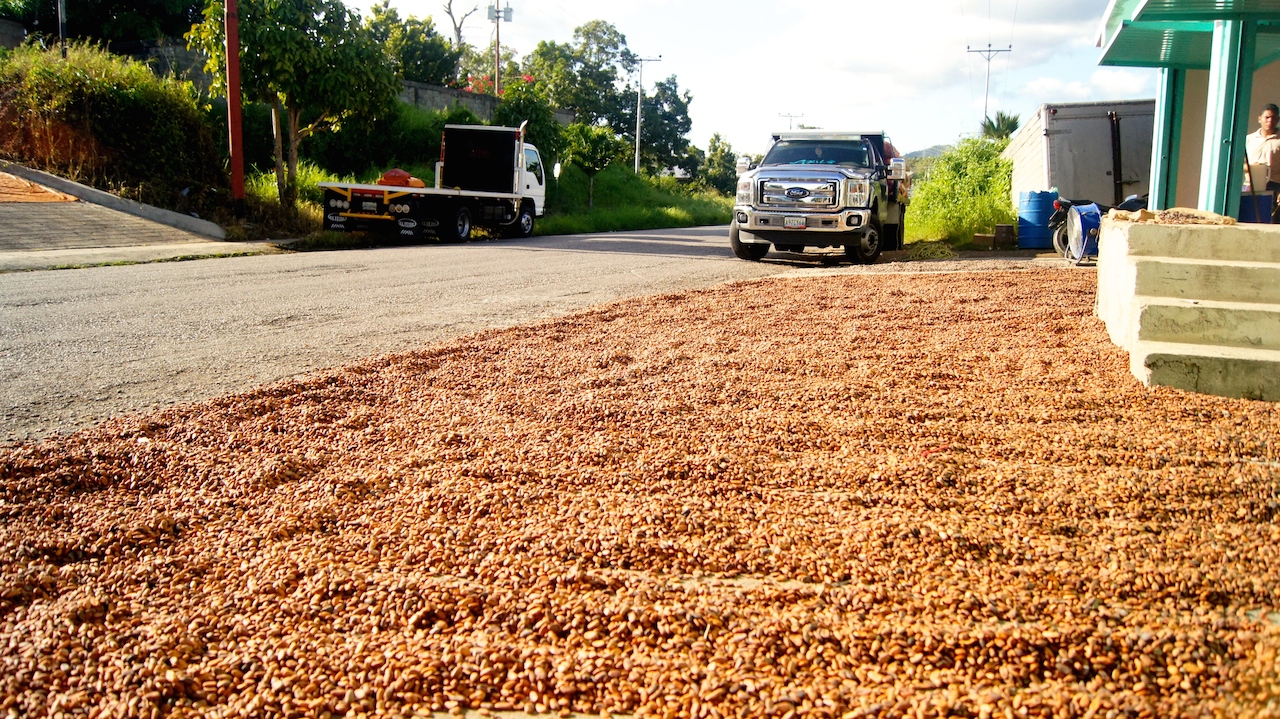
Quality versus price
Price is another fundamental aspect for producers. The value of cocoa is perhaps what most concerns them. It occurs in most of the country’s cocoa areas and Paria is not an exception.
Again, the cultural aspect plays an essential role in handling the product. The fermentation process is a perfect example. For Paria producers, since there is no price difference between fermented and ordinary cocoa, they prefer to sell the latter because it is available in less time and generates the same profits. That’s what experience has shown them.
After visiting Paria, Andreína Portillo attributes this situation to producers’ lack of motivation to work to obtain a better cocoa, whose present commercialisation and sale is carried out in a rather informal way.
In this sense, Ezequiel Millán’s point of view is very solid “producers have been looking for better profits based only on prices, but we have the lowest production rate in the world, and without production we could not have a price”, he says referring to the national figures, which according to some experts in the field, they are not more than 18 thousand tons a year.
“National agricultural policies, especially on the cocoa area, have not been the most adequate. They must be better conceived and in accordance with the reality of the sector, beyond credits or financing.”

Organisation, to begin with
In an attempt to change this reality, some have already begun to get organised. Such is the case of the Association of Cocoa Producers of the Benítez and Libertador municipalities, ASOCABELIB. Its members, apart from promoting training, advice and technical assistance to cocoa farmers, they encourage the defence of a fair price, so that it helps improve their income and consequently their quality of life.
The high price of supplies and tools for cultivation and processing, the lack of skilled labour force, constant robberies in the haciendas, and the complicated economic situation in Venezuela, characterised mainly by high inflation rates, are undoubtedly major problems that today afflict cocoa producers in Paria.
We were able to prove it during our tour around this generous and prosperous land. We are aware that these are adverse situations and difficult to cope with; Nevertheless, from Vivaelcacao we commend the work of these producers. We bet on their work, especially from those who without looking back and leaving aside the way their predecessors did, have started a new stage in which they see cocoa not only as a way to obtain wealth, but as that seed that can bring back the hope and progress that our country is longing for.
